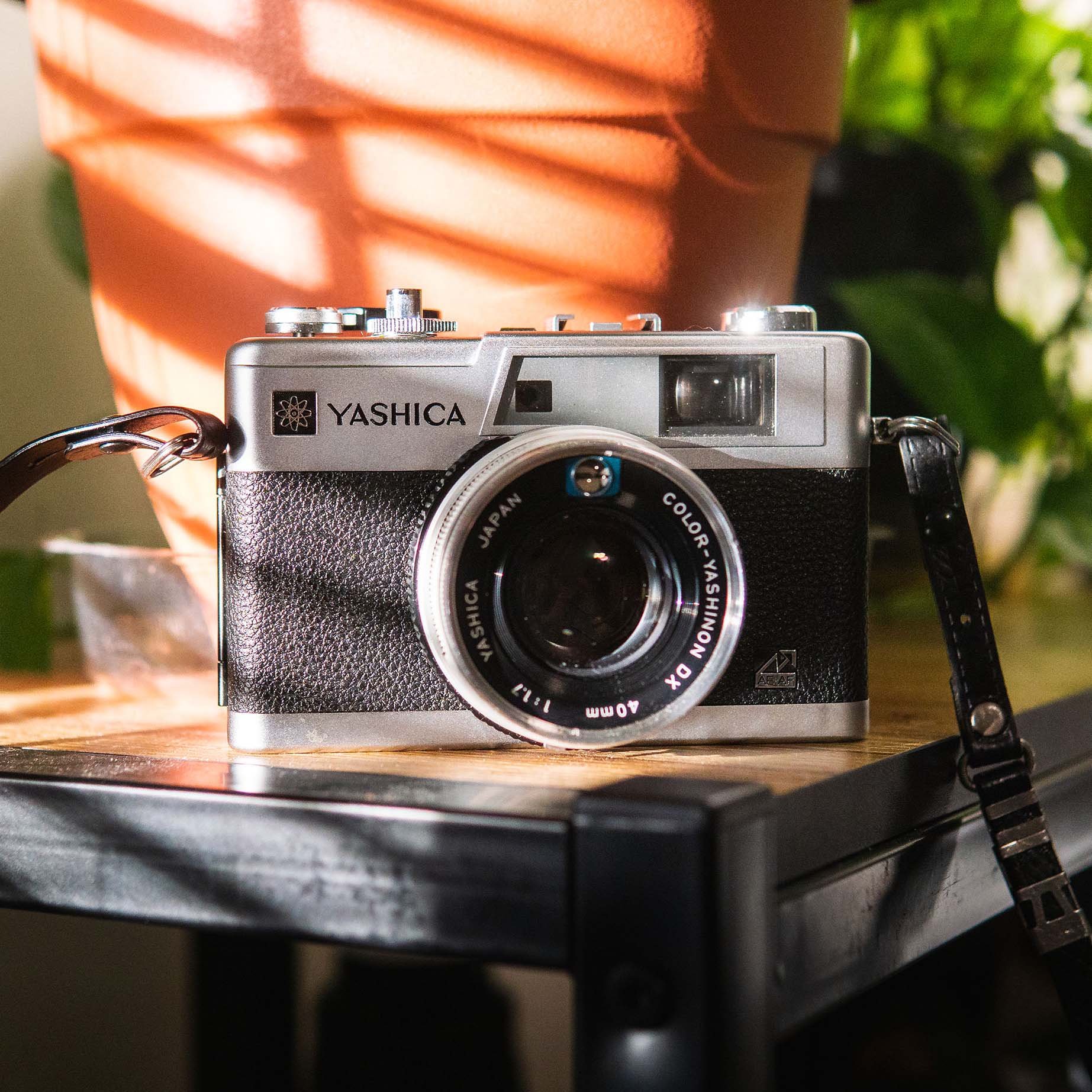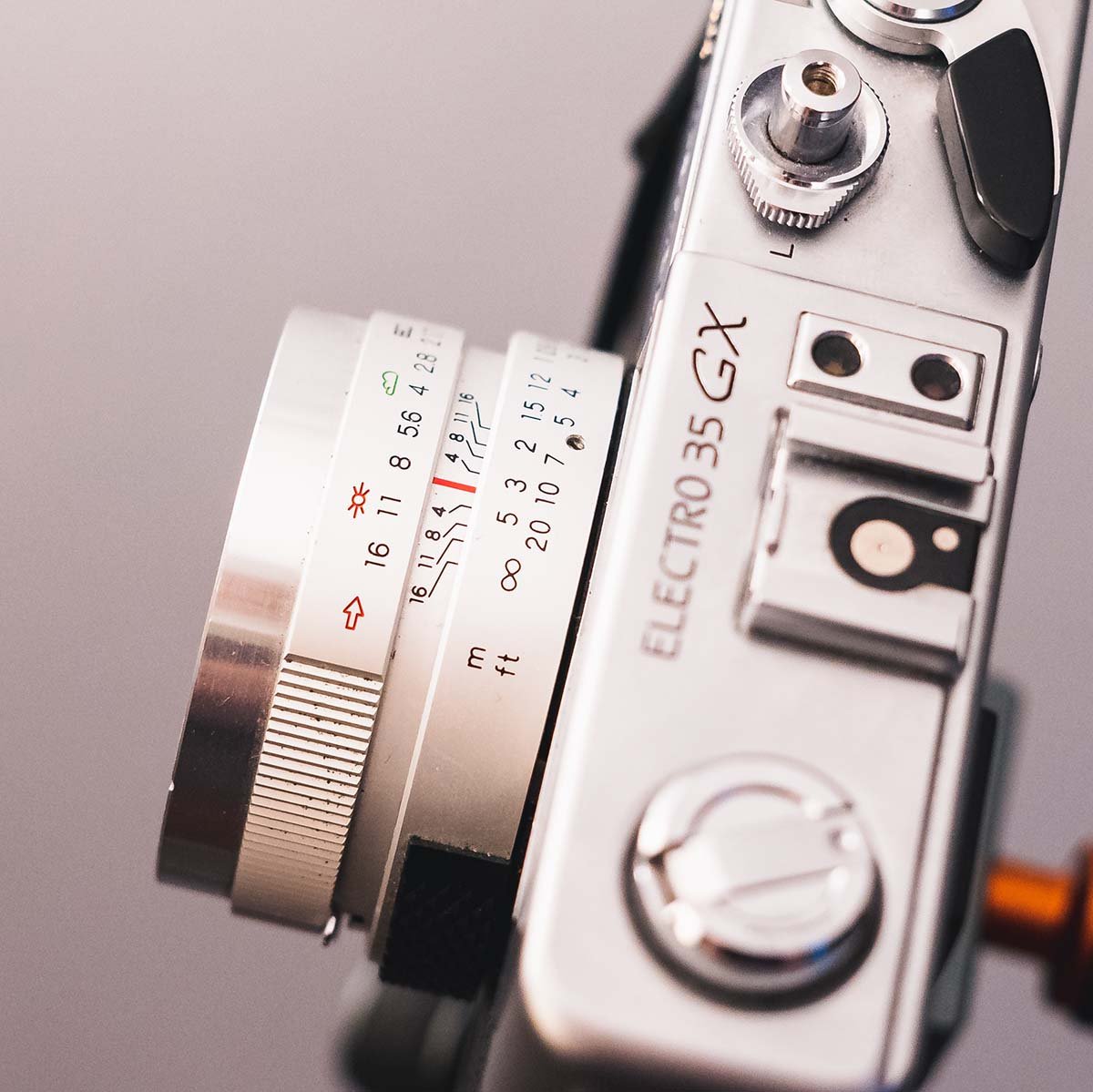Yashica Electro 35 GX Review
The Yashica Electro 35 GX At a Glance
I bought this camera about 2 years ago while pursuing through my local thrift store. I made my way to the back shelves where one particular booth frequently sold old, vintage film cameras. This gem immediately caught my eye and I knew I had to have it; if I didn’t purchase I knew someone else would!
The Yashica Electro 35 GX is a lightweight and extremely compact rangefinder-style camera that shoots 35 mm film. Manufactured in Japan from 1975 to 1980, coming across this 40-year-old camera in such great condition was quite the find. It is a fixed lens, meaning there’s no way to change out the focal lengths which may be a deal breaker for some shooters. However, this Yashica model was definitely made to be a quick shooting “on-the-go” type of camera. That being said, the 40 mm f1.7 lens gets the job done for most outdoor shooting environments. I wouldn’t use it for indoor scenes but we will go over that a bit more in-depth later. Overall, while not as groundbreaking of a find as certain Canon or Nikon models this tiny rangefinder was in mint condition. For a decent price tag of $135, I thought this would be a fine camera to add to my collection! On further investigation, there are very few in-depth reviews of this model. So, I figured I’d take it upon myself to write one!
Yashica Electro 35 GX Lens
As stated previously this fixed lens rangefinder camera was constructed with a 40 mm f1.7 lens with a very smooth focusing ring. After reading through old forums on this camera and other similar models people seem to be pretty split on their feelings about the 40 mm focal length. I personally think it was a great choice! 40 mm seems to do the job well for both portraits and wider scenes while out and about. A happy sweet spot between wide angle and portrait styles. This is why the lens, I believe, is quite versatile.
Its aperture ring goes from 1.7 to 16 at half-stop increments. This camera is not fully manual (more on that later) and uses info from 3 factors to determine shutter speed:
Its internal light meter
The assigned ISO at the bottom of the lens
And your chosen F stop to then shoot the image at the appropriate shutter speed.
The aperture ring has tiny drawings which are intended to be used as a baseline indicator for where to set the aperture depending on the environment. Basically, it uses the Sunny 16 rule! It has a minimum focusing distance of 2.6 feet (or 0.8 meters) and a max focusing distance of 20 feet (5 meters) just before infinity. Overall, I’d say this is a decent lens! It's not cheaply made and the glass, assuming you find one in well-kept condition, is quite clear and produces a great-looking image. I wouldn’t expect too much though if you are a freak for detail and tack-sharp images I wouldn’t expect too much. Some sample images below show how sharp you can expect your images to be. Keep in mind this was shot on Kodak UltraMax 400 color film, a cheap and grainy film stock that you can buy at most corner drug stores. I used this for test shots as I was unsure if it had any light leaks!
Shooting With the Yashica Electro 35 GX
The Angler
Taken on Kodak Portra 160. One of my favorite recent images I’ve made with the Yashica.
While a versatile and tough camera, after using it in a variety of situations I’ve learned that it does (like most old cameras) have its limitations. The camera as stated before uses an internal system to meter light and tell the shooter how to adjust the F stop to properly expose the image. You first set the ISO on the bottom of the lens. Then, after looking through the viewfinder or on top of the camera you will see two left and right arrow indicators. When pressing the shutter button down halfway one of these arrows will light up telling you which direction you need to adjust your aperture to get into a good range of exposure. Once you fully press the shutter button it then uses the info from this and chooses a shutter speed for you to capture the image. The Yashica Electro 35 GX has a shutter range of 30 seconds to 1/500. I’ve personally never experimented with this camera for 30-second long exposures and I don’t really think I will. There is no “b” bulb setting, so I’d much rather take along a fully manual camera so I know exactly what each of my settings is.
To be short- although I love this camera now- getting used to this method of shooting felt a bit… clunky. This particular Yashica was in great condition, but I’ve found on this one and through research from many others who have purchased them that the lights for the meter arrows often are extremely dull or don’t entirely work. Mine luckily still work, but they are quite faint. This makes it a bit hard to shoot in very bright situations where the sunlight may drown out the light of the diodes. After using it for some time you will be able to pre-visualize what your image will look like much better. But for a new shooter who is getting used to film photography the learning curve may be a bit steep; meaning multiple rolls of over or underexposed film!
This camera shines in semi-cloudy outdoor environments with a solid 100-200 ISO film like Kodak Gold 200 or Kodak Portra 160. Shooting with color or black-and-white film that is lower in ISO but has good dynamic range is the way to go. Maybe it's just me and I’m a bad photographer… but I’ve found that sometimes I get scans back and the images all look slightly over or underexposed (more so than I planned). So, having that latitude to correct the highlights/exposure in post has come in handy.
Below are the three film stocks I would recommend for this camera body. Clicking/tapping these links will bring you to an Amazon link. If you feel like purchasing these film varieties, I earn commission on sales through these links! Thanks for supporting the blog!
What Kind of Batteries Does the Yashica Electro 35 GX Use?
The Yashica Electro 35 GX originally was meant to take 1.35v PX640 mercury batteries. These have since been discontinued but you can still use substitutes if you order online. If you’re a casual film user who is new to vintage film cameras this may be a drawback to you. The workarounds though are pretty simple! Some current replacements for the PX640 that I use are the A640PX. The major drawback is that they are about $7 a piece… and you’ll need two. They do last for quite a bit, however, it isn’t super convenient. In addition, you may need to do some finessing to get them to fit well. In my current Yashica, I have folded tin foil and placed it on either end of the two batteries so they are a tighter fit with the positive and negative contacts. Some other replacements include PC640A or the LR52. I this is a deal breaker for you honestly I’d completely understand. Running out of battery juice and not being able to go to the corner store and pick up more can be quite the pain. But alas, it's the price you pay for enjoying these vintage cameras.
Final Thoughts
The Yashica Electro 35 GX was in production for 5 years as a consumer segway between the casual user and more “professional” style cameras. Although not super common, and it has its drawbacks in certain lighting situations, I really love this camera. For casual days out with friends or family when I need a reliable and compact way to shoot film, I’m reaching for this rangefinder 9 times out of 10. If you find one in good condition I would highly recommend purchasing it! One thing to note, though, is that this model doesn’t really have any long-term resale value. This isn’t some rare Leice. If you purchase for $100 it more than likely won’t go up in value unless you were to do some serious restorations. But even then the cost of such restorations would outweigh any potential bump in value this camera holds.
This camera makes a wonderful daily carry for vintage film camera enthusiasts. Its compact and lightweight size makes it perfect for keeping in your walk-around backpack or letting it hang at your waist on a long leather strap. I often post images with this model on my Instagram so feel free to follow me there to keep up with future shoots.










